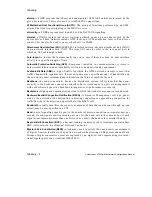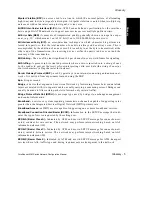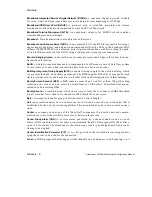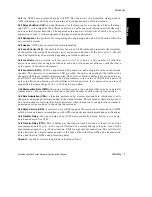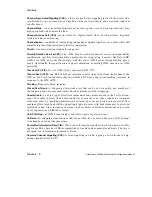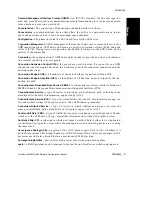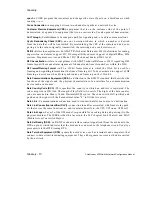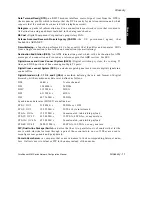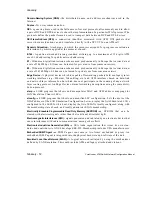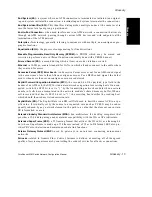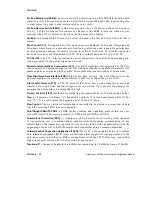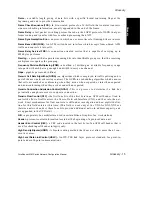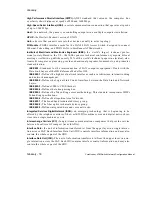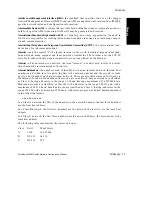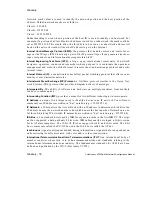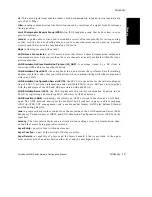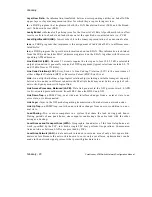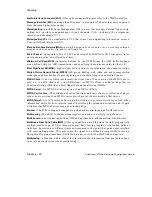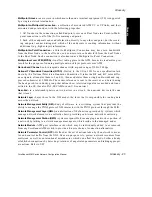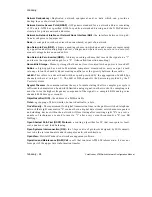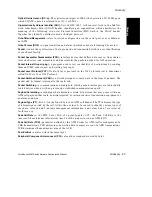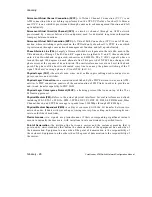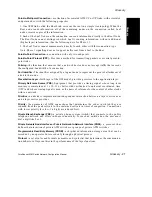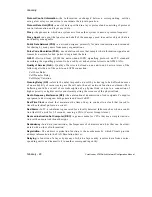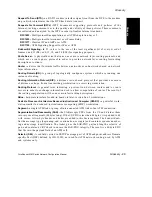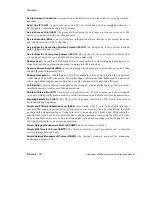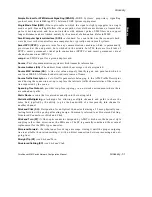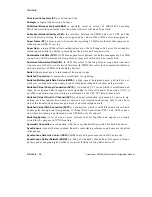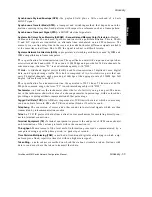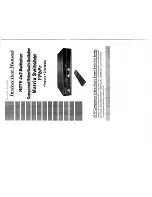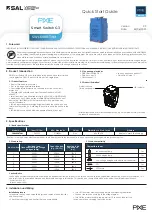
Glossary - 18
ForeRunner
ATM Switch Network Configuration Manual
Glossary
Network mask values are used to identify the network portion and the host portion of the
address. Default network masks are as follows:
Class A - 255.0.0.0
Class B - 255.255.0.0
Class C - 255.255.255.0
Subnet masking is used when a portion of the host ID is used to identify a subnetwork. For
example, if a portion of a Class B network address is used for a subnetwork, the mask could be
set as 255.255.255.0. This would allow the third byte to be used as a subnetwork address. All
hosts on the network would still use the IP address to get on the Internet.
Internet Control Message Protocol (ICMP) -
the protocol that handles errors and control mes-
sages at the IP layer. ICMP is actually a part of the IP protocol layer. It can generate error mes-
sages, test packets, and informational messages related to IP.
Internet Engineering Task Force (IETF) -
a large, open, international community of network
designers, operators, vendors and researchers whose purpose is to coordinate the operation,
management and evolution of the Internet to resolve short- and mid-range protocol and archi-
tectural issues.
Internet Protocol (IP) -
a connectionless, best-effort packet switching protocol that offers a com-
mon layer over dissimilar networks.
Internetwork Packet Exchange (IPX) Protocol -
a NetWare protocol similar to the Xerox Net-
work Systems (XNS) protocol that provides datagram delivery of messages.
Interoperability -
The ability of software and hardware on multiple machines, from multiple
vendors, to communicate.
Interworking Function (IWF) -
provides a means for two different technologies to interoperate.
IP Address -
a unique 32-bit integer used to identify a device in an IP network. You will most
commonly see IP addresses written in “dot” notation (e.g., 192.228.32.14).
IP Netmask -
a 32-bit pattern that is combined with an IP address to determine which bits of an
IP address denote the network number and which denote the host number. Netmasks are use-
ful for sub-dividing IP networks. IP netmasks are written in “dot” notation (e.g., 255.255.0.0).
ISA Bus -
a bus standard developed by IBM for expansion cards in the first IBM PC. The origi-
nal bus supported a data path only 8 bits wide. IBM subsequently developed a 16-bit version
for its AT class computers. The 16-bit AT ISA bus supports both 8- and 16-bit cards. The 8-bit
bus is commonly called the PC/XT bus, and the 16-bit bus is called the AT bus.
Isochronous -
signals carrying embedded timing information or signals that are dependent on
uniform timing; usually associated with voice and/or video transmission.
International Telecommunications Union Telecommunications (ITU-T) -
an international body of
member countries whose task is to define recommendations and standards relating to the
international telecommunications industry. The fundamental standards for ATM have been
defined and published by the ITU-T (Previously CCITT).
Summary of Contents for forerunner series
Page 6: ......
Page 16: ...TOC 10 ForeRunner ATM Switch Network Configuration Manual Table of Contents ...
Page 20: ...LOF 4 ForeRunner ATM Switch Network Configuration Manual List of Figures ...
Page 22: ...LOT 2 ForeRunner ATM Switch Network Configuration Manual List of Tables ...
Page 30: ...viii ForeRunner ATM Switch Network Configuration Manual Preface ...
Page 144: ...3 58 ForeRunner ATM Switch Network Configuration Manual Configuring an Emulated LAN ...
Page 180: ...6 12 ForeRunner ATM Switch Network Configuration Manual ATM Forum PNNI ...
Page 220: ...9 6 ForeRunner ATM Switch Network Configuration Manual Configuring Timing ...
Page 300: ...D 24 ForeRunner ATM Switch Network Configuration Manual Configuring FramePlus Modules ...
Page 308: ...Acronyms 8 ForeRunner ATM Switch Network Configuration Manual Acronyms ...
Page 346: ...Glossary 38 ForeRunner ATM Switch Network Configuration Manual Glossary ...
Page 352: ...Index 6 ForeRunner ATM Switch Network Configuration Manual Index ...

